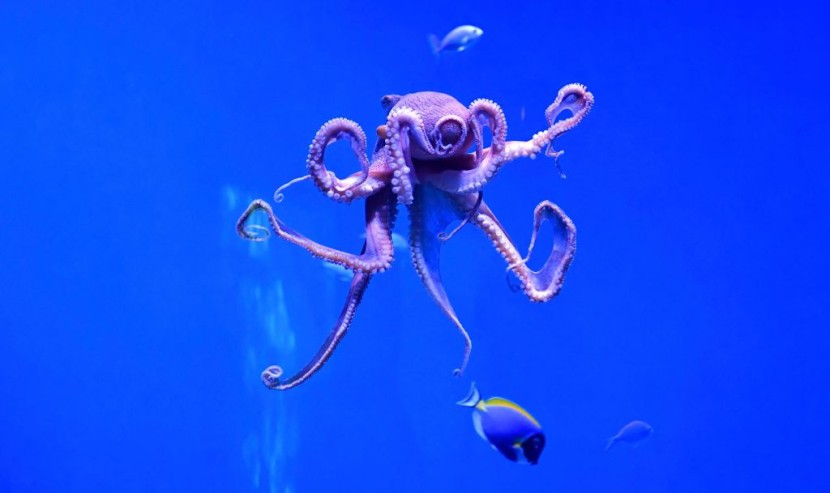Deep-sea octopuses are often solitary species that live in one of the most difficult settings on Earth: cold waters.
Marine biologists were equally puzzled and enthralled by the finding of thousands of eight-legged cephalopods in 2018 at a depth of roughly 2 miles below the ocean's surface, according to CNN.
The Midnight Zone
Around 10,500 feet (3,200 meters) below the surface, in the so-called midnight zone, a region of unending darkness, the group of octopuses gathered around a hydrothermal vent, an aperture in the seafloor where warm, chemical-rich fluids seep out.
The Muusoctopus robustus species, also known as the "pearl octopus," was abundant in the octopus garden, which was located on a small hill close to the base of the Davidson Seamount, an extinct underwater volcano 80 miles (128.7 kilometers) southwest of Monterey, California.
The Greatest Known Concentration of Octopuses on the Planet
Researchers recorded more than 6,000 octopuses in just one area of the location, making it the greatest known concentration of octopuses on Earth.
According to a recent study that was published on Wednesday in the journal Science Advances, scientists think that the reason why so many octopuses come to the deep-sea thermal springs is to breed and build nests. Expectant octopus mothers clean their eggs after they are laid and protect them from predators. The critters' embryonic development is accelerated by the warmer temperatures.

At 10,500 feet, the water's natural temperature is 35 degrees Fahrenheit (1.6 degrees Celsius). In contrast, the water temperature in the octopus garden's cracks and crevices can become as high as 51 degrees Fahrenheit (11 degrees Celsius).
Modern underwater equipment was used by experts from the Monterey Bay Aquarium Research Institute and their peers from other organizations to comprehend the octopus garden.
Between 2019 and 2022, the institute's ROV Don Ricketts made 14-day-long follow-up dives to the location, where it recorded high-definition footage of the octopuses and mapped the octopus garden at a resolution of one meter.
A time-lapse camera and sensors to assess temperature and oxygen levels were also left behind by the remotely controlled submersible for long-term observations of the activity of the octopuses. From March 2022 through August 2022, the camera took around 12,200 photos, one every 20 minutes.
With this knowledge, researchers were able to piece together the attraction of the spot for octopuses. The researchers were able to track specific octopuses and the growth of their broods thanks to scars and other identifying characteristics.
The fact that there were adult male and female octopuses, maturing eggs, and hatchling octopuses showed that the location was only used as a breeding ground and nursery. No animals of intermediate size or signs of eating were seen by the researchers.
The research revealed that the eggs hatched significantly quicker than the team had anticipated, in less than two years. One type of deep-sea octopus takes four and a half years to raise its eggs. In the deep sea's near-freezing temperatures, away from hydrothermal vents, egg-brooding periods are believed to persist for several years.
Read also: Refused to Become Food: Doctors Find Octopus Stuck in Patient's Throat
The Role of the Warmth of Thermal Springs
The warmth from thermal springs, according to researchers, improved the metabolism of female octopuses and the eggs they lay, shortening the time needed for incubation and decreasing the likelihood that predators will consume the eggs. It's unclear, though, if this species truly needs this warmth in order to reproduce and build nests, or if they only enjoy looking for it.
Although deep-sea exploration is exceedingly expensive, the researchers plan to continue studying the Davidson Mount site and seek out locations with comparable geology that might contain further octopus gardens, according to Barry.
Octopuses are renowned for being selfless parents; after depositing a clutch of eggs, they stop eating and begin to deteriorate, usually passing away by the time the eggs hatch. Invertebrates such as sea anemones and sea stars that coexist with the brooding octopuses feast on dead octopuses and weak hatchlings.
Four deep-sea octopus gardens have been identified by researchers thus far, two of which are off the coasts of Costa Rica and Central California on the Davidson Mount.
Related article: Inky The Octopus Escapes To Ocean From New Zealand Aquarium [VIDEO]








